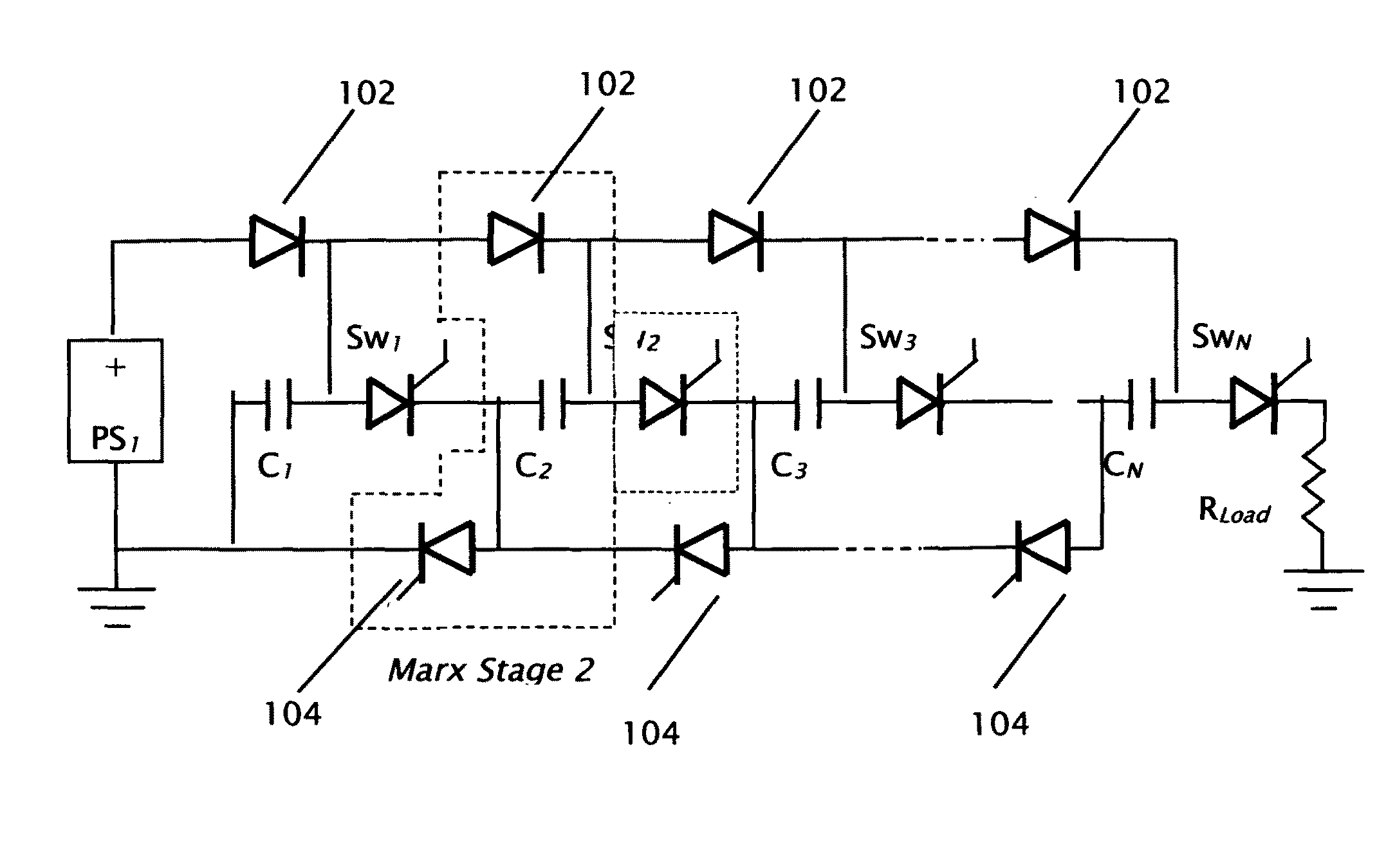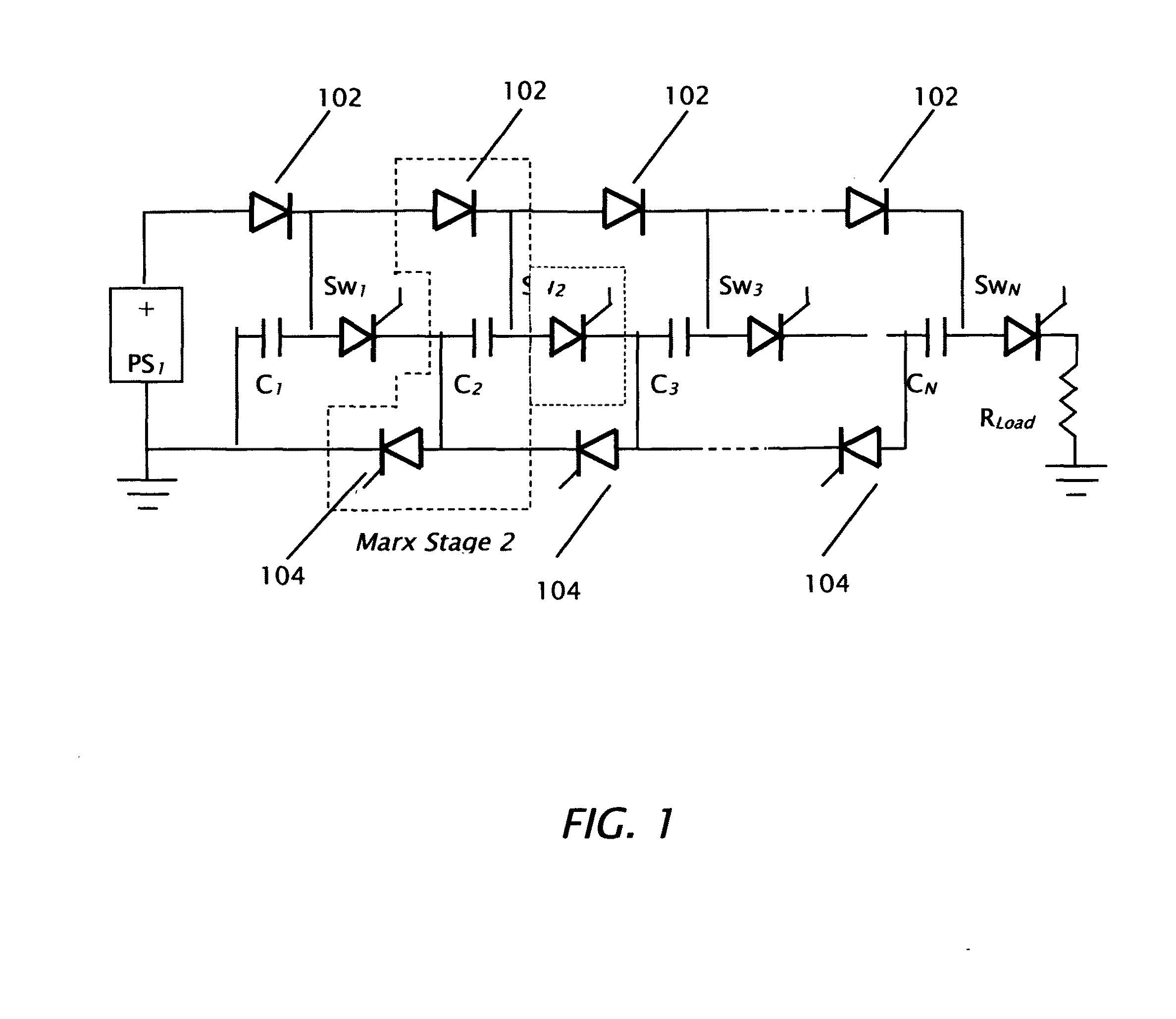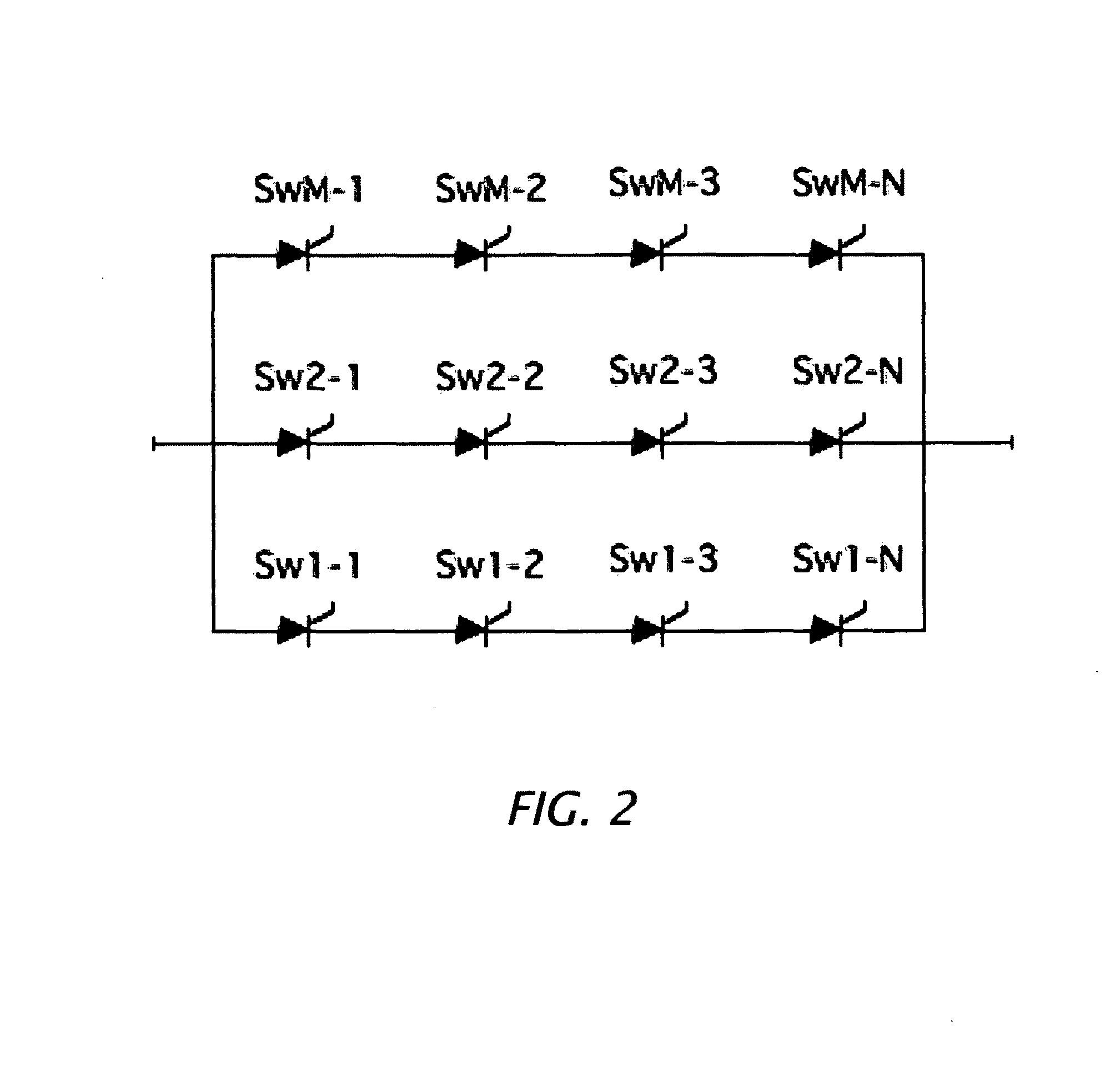Photon initiated marxed modulators
a marx generator and modulator technology, applied in pulse train generators, pulse techniques, instruments, etc., can solve the problems of limiting system reliability, repetition rate, and long life of marx generators, and achieves high voltage, long life, and high energy transfer.
- Summary
- Abstract
- Description
- Claims
- Application Information
AI Technical Summary
Benefits of technology
Problems solved by technology
Method used
Image
Examples
example 1
[0066]The accelerating cavities for linear accelerators are frequently powered by radio frequency electromagnetic pulses that are produced by Klystrons. This invention can satisfy the requirements of such Klystrons: for example, a Photon Initiated Marxed-PFN pulse generator can produce low ripple 500 kV, 530 A, 1.6 microsecond flattop pulses with rise and fall times of less than 300 nanoseconds at repetition rates of at least 120 Hz by Marxing sixty, 15.7 Ohm PFN's (charged to 16.7 kV each) via photon initiated thyristors. FIG. 16 demonstrates a possible mechanical configuration for such a circuit. While FIG. 16 shows only six Marx stages, the number of stages is arbitrary. Likewise, the number of LC sections in each PFN is arbitrary and is not limited to that shown in FIG. 16. The output voltage waveform into a matched load for a sixty-four stage Photon Initiated Marxed-PFN is shown in FIG. 7. The photons required to trigger (and possibly sustain) the photon initiated switches for ...
example 2
[0067]Present and future requirements for compact, lightweight, robust, rep-rate sources for High Power Microwave Directed Energy (DE) applications cannot be met with conventional components or pulsed power generator circuits. Switching and elimination of pulse transformers and / or water lines are crucial issues for these systems. For example, many High Power Microwave devices, such as Magnetically Insulated Line Oscillators (MILO's), Relativistic Magnetrons, Ubitrons, etc., require relatively flat-topped pulses. Since these devices typically do not demand the extreme flat-topped pulses required by Klystrons for linear accelerators, the waveforms can be generated by adding pulse shaping circuits to Marx generators with capacitor energy storage (as shown in FIGS. 10, 11 and 14), thereby reducing the component count manifest to the Marxed-PFN topology. These devices range in impedance from approximately ten to one hundred Ohms and require pulse durations ranging from about 100 nanoseco...
example 3
[0068]It is possible to synthesize a variety of pulse shapes by triggering (erecting) a plurality of parallel connected Marx generators (reference FIG. 4) at different times. The pulse shapes can be further improved by building the Marxes with different characteristic impedances.
PUM
 Login to View More
Login to View More Abstract
Description
Claims
Application Information
 Login to View More
Login to View More - R&D
- Intellectual Property
- Life Sciences
- Materials
- Tech Scout
- Unparalleled Data Quality
- Higher Quality Content
- 60% Fewer Hallucinations
Browse by: Latest US Patents, China's latest patents, Technical Efficacy Thesaurus, Application Domain, Technology Topic, Popular Technical Reports.
© 2025 PatSnap. All rights reserved.Legal|Privacy policy|Modern Slavery Act Transparency Statement|Sitemap|About US| Contact US: help@patsnap.com



